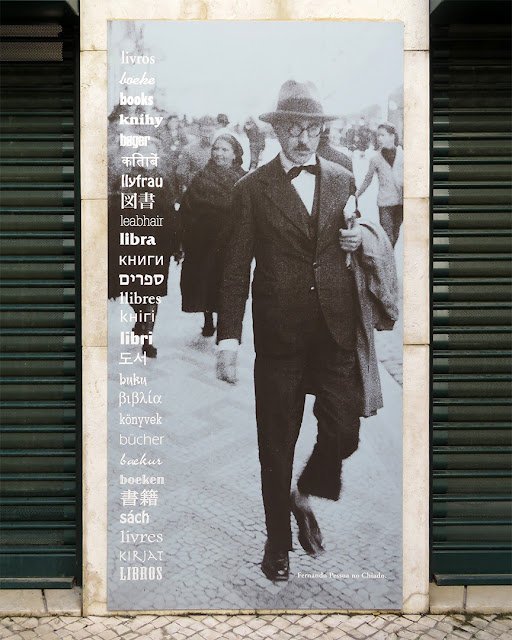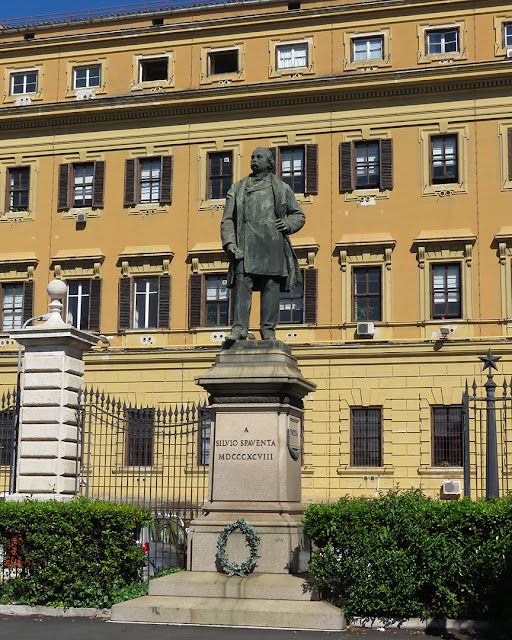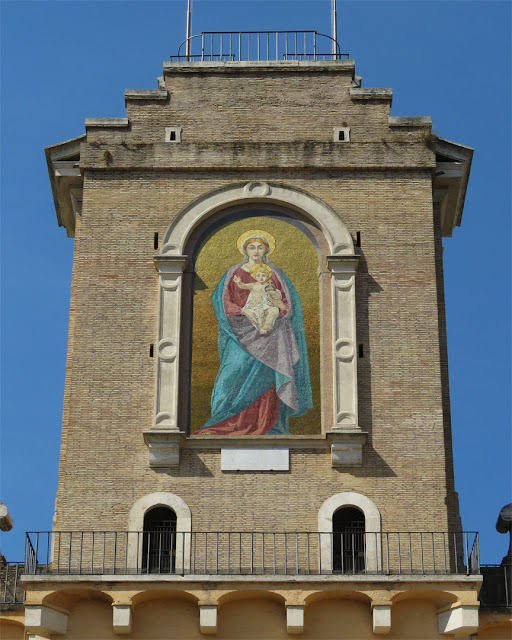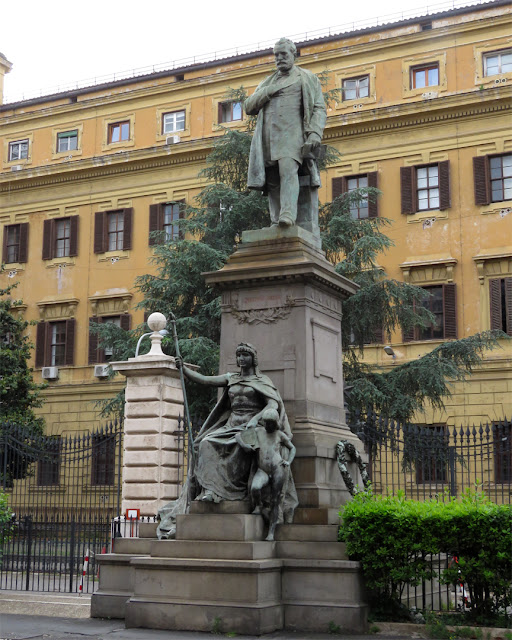Thursday, June 30, 2022
Midtown Comics Times Square
Midtown Comics Times Square
W 40th Street
New York, September 2007
“Midtown Comics is a New York City comic book retailer with three shops in Manhattan and an e-commerce website. The largest comic book store in the United States, the company opened its first store in the Times Square area in 1997. Its second was opened on Lexington Avenue in 2004, and is known as the Grand Central store for its proximity to Grand Central Terminal. Its downtown store was opened on Fulton Street in the Financial District in November 2010, and its Astoria, Queens outlet store opened in March 2020. It also used to operate a boutique inside Manhattan's Times Square Toys R Us. The store is noted for appearances by celebrities known outside the comic book industry, for its friendly and energetic staff, and for being the most media-friendly comic store in the United States. It was named by The Village Voice in 2012 as the Best Comic Book Store in New York, and has been hailed by CBR.com as ‘the industry's leading retailer of comic books, graphic novels and manga.’ On July 13, 2012, the National Geographic Channel premiered Comic Store Heroes, a reality television program set at Midtown Comics. In 2013, it was ranked number 44 on Bleeding Cool magazine's Top 100 Power List of Comic Books, due to its geographic proximity to the then-headquarters of ‘Big Two’ of the American comic book publishing industry, Marvel Comics and DC Comics, and the relationship between the store and industry professionals.” (Midtown Comics, Wikipedia)
Wednesday, June 29, 2022
Tuesday, June 28, 2022
Silvio Spaventa
Monument to Silvio Spaventa by Giulio Tadolini, 1898
Ministry of Economy and Finances
Via Cernaia
Rome, May 2019
“Silvio Spaventa (12 May 1822 – 20 June 1893) was an Italian journalist, politician and statesman who played a leading role in the unification of Italy, and subsequently held important positions within the newly formed Italian state.” (Silvio Spaventa, Wikipedia)
Monday, June 27, 2022
Tančící dům
Nationale-Nederlanden building by Vlado Milunić & Frank Gehry, 1996
Tančící dům (Dancing House) or Fred and Ginger
Rašínovo nábřeží
Prague, September 2017
“The Dancing House (Czech: Tančící dům), or Fred and Ginger, is the nickname given to the Nationale-Nederlanden building on the Rašínovo nábřeží (Rašín Embankment) in Prague, Czech Republic. It was designed by the Croatian-Czech architect Vlado Milunić in cooperation with Canadian-American architect Frank Gehry on a vacant riverfront plot. The building was designed in 1992. The construction, carried out by BESIX, was completed four years later in 1996. Gehry originally called the house Fred and Ginger (after the dancers Fred Astaire and Ginger Rogers – the house resembles a pair of dancers) but this nickname is now rarely used. Gehry himself later discarded his own idea, as he was ‘afraid to import American Hollywood kitsch to Prague’.” (Dancing House, Wikipedia)
Sunday, June 26, 2022
Hounslow 9 miles
Hounslow 9 miles - London 1 mile milestone, 1911
Royal Geographic Society
Kensington Gore, Kensington
London, September 2014
“The concrete milestone is attached to the wall of the Royal Geographical Society in Kensington Gore which is part of the A315.” (A315 Milestone, Waymarking)
Saturday, June 25, 2022
Monumento all'Indiano
Monumento all'Indiano (Monument to the Indian)
Parco delle Cascine (Cascine Park)
Florence, December 2021
“The Monumento all'Indiano or Monument to the Indian, more specifically ‘Monument to the Maratha Maharajah of Kohlapur, Rajaram Chhatrapati’ consisting of a small dome, or baldacchino, over the bust of the Indian prince, located at the east end of the Parco delle Cascine, of Florence, region of Tuscany, Italy. This is a peculiar monument attached to an unusual event. In 1870, returning from London after paying his respects to Queen Victoria, the 21 year old Maharajah, Rajaram II died from a febrile illness in his hotel room in the ‘La Pace Hotel’. His courtiers asked to conduct a cremation, or Antyesti ceremony, at the confluence of two rivers. They were able to perform a ceremony at the confluence of the Arno and stream of the Mugnone, near this site in the park. The events and the ceremony elicited a great deal of curiosity in the public.” (Monumento all'Indiano, Wikipedia)
Friday, June 24, 2022
Stará tržnica
Stará tržnica (Old Market Hall)
Námestie SNP
Staré Mesto (Old Town)
Bratislava, September 2017
“A 15th-century bastion, part of the city’s mediaeval fortifications, once stood on the site of the present-day Old Market House – or Stará tržnica. In 1910 the present building, which was the first covered market in Bratislava, was erected according to an eclectic design by František Nechyba. In front of the market building is a fountain called The Lion with Coat of Arms. The fountain was assembled from parts of an older fountain and renovated in 1937. Near the fountain, under a glass canopy, the remnants of the walls of the 11th-century St Jacob’s Chapel are visible.” (Old Market Hall, Visit Bratislava)
Thursday, June 23, 2022
Wednesday, June 22, 2022
Tuesday, June 21, 2022
Monday, June 20, 2022
1964 Alvis TE 21
1964 Alvis TE 21
West Carriage Drive
Hyde Park
London, September 2014
“Alvis Car and Engineering Company Ltd was a British manufacturing company in Coventry from 1919 to 1967. In addition to automobiles designed for the civilian market, the company also produced racing cars, aircraft engines, armoured cars and other armoured fighting vehicles. Car manufacturing ended after the company became a subsidiary of Rover in 1965, but armoured vehicle manufacture continued. Alvis became part of British Leyland and then in 1982 was sold to United Scientific Holdings, which renamed itself Alvis plc.” (Alvis Car and Engineering Company, Wikipedia)
Sunday, June 19, 2022
Lake and footbridge
Lake and footbridge
San Donato Park
Via Pertini, Novoli
Florence, December 2021
“The area was divided into residential and commercial building lots, a part was occupied by faculties of the University of Florence and the New Palace of Justice, and finally 12 hectares were allotted as public park, the San Donato Park. A decision was made to plant 530 trees of varied species, some characteristic of the territory, others rare or typical of other soils. Mostly ash trees, hornbeams, willows, poplars, magnolias, but also windmill palms, American styraxes, ginko biloba and oaks. When they are all grown up, they will create a very special and interesting atmosphere, but it will take time. At the center of the park there is a lake, crossed by a pedestrian bridge and inhabited by a happy family of ducks . A small hill planted entirely with cypresses was built with the excavated earth.” (Il Parco di San Donato a Novoli, Leonardo da Vinci Art School)
Saturday, June 18, 2022
Hermes Fountain
Hermes Fountain by Wild László
Régi posta utca
Budapest, September 2017
“This statue of the Greek God Hermes is standing on top of a small water fountain, with four spouts feeding a bowl. It is in one of the main shopping districts of Budapest and stands at the corner of Régi posta utca and Vaci utca.” (Hermes Fountain, Waymarking)
Friday, June 17, 2022
Thursday, June 16, 2022
Porta Pia
Porta Pia
Via Venti Settembre
Rome, June 2019
“Porta Pia is a gate in the Aurelian Walls of Rome, Italy. One of Pope Pius IV's civic improvements to the city, it is named after him. Situated at the end of a new street, the Via Pia, it was designed by Michelangelo in replacement for the Porta Nomentana situated several hundred meters southwards, which was closed up at the same time. Construction began in 1561 and ended in 1565, after the artist's death. A 1561 bronze commemorative medal by Gian Federico Bonzagna shows an early plan by Michelangelo, very different from his final design. The façade on the outside of the city was completed in 1869 under the Neo-Classicist design by Virginio Vespignani.” (Porta Pia, Wikipedia)
Wednesday, June 15, 2022
Statue of Liberty
Statue of Liberty by Frédéric Auguste Bartholdi, 1886
Liberty Island, New York Harbor
New York, September 2007
“The Statue of Liberty (Liberty Enlightening the World; French: La Liberté éclairant le monde) is a colossal neoclassical sculpture on Liberty Island in New York Harbor in New York City, in the United States. The copper statue, a gift from the people of France to the people of the United States, was designed by French sculptor Frédéric Auguste Bartholdi and its metal framework was built by Gustave Eiffel. The statue was dedicated on October 28, 1886. The statue is a figure of Libertas, a robed Roman liberty goddess. She holds a torch above her head with her right hand, and in her left hand carries a tabula ansata inscribed JULY IV MDCCLXXVI (July 4, 1776 in Roman numerals), the date of the U.S. Declaration of Independence. A broken shackle and chain lie at her feet as she walks forward, commemorating the recent national abolition of slavery. After its dedication, the statue became an icon of freedom and of the United States, seen as a symbol of welcome to immigrants arriving by sea. Bartholdi was inspired by a French law professor and politician, Édouard René de Laboulaye, who is said to have commented in 1865 that any monument raised to U.S. independence would properly be a joint project of the French and U.S. peoples. The Franco-Prussian War delayed progress until 1875, when Laboulaye proposed that the French finance the statue and the U.S. provide the site and build the pedestal. Bartholdi completed the head and the torch-bearing arm before the statue was fully designed, and these pieces were exhibited for publicity at international expositions.” (Statue of Liberty, Wikipedia)
Tuesday, June 14, 2022
Edith Cavell Memorial
Memorial to Edith Cavell by Sir George Frampton, 1920
St Martin's Place
London, September 2014
“The Edith Cavell Memorial is an outdoor memorial to Edith Cavell by Sir George Frampton, in London, United Kingdom. The memorial is sited in St Martin's Place, beside the A400, just outside the northeast corner of Trafalgar Square, north of St Martin-in-the-Fields, east of the National Gallery and the National Portrait Gallery, and south of the London Coliseum. The site is adjacent to the first headquarters of the British Red Cross, originally located at 7 St Martin's Place. Cavell was a British nurse from Norfolk. She was matron at Berkendael Medical Institute in Brussels when the First World War broke out in 1914. In addition to nursing soldiers from both sides without distinction, she assisted some 200 Allied soldiers escape from German-occupied Belgium. She was arrested in August 1915, court-martialled, found guilty of treason, and shot by a German firing squad on 12 October 1915. Her story was used in British propaganda as an example of German barbarism and moral depravity. Her remains were initially buried in Belgium, but returned to Britain after the war in May 1919 for a state funeral at Westminster Abbey before she was finally buried at Norwich Cathedral. Although Cavell's sister, Lilian Wainwright suggested no monuments should be erected, funds for a public memorial were raised by a committee chaired by Harry Levy-Lawson, 1st Viscount Burnham, owner of The Daily Telegraph, together with the Lord Mayor of London, the Bishop of London, and the chairman of London County Council. Sculptor Sir George Frampton accepted the commission in 1915, but declined any fee.” (Edith Cavell Memorial, Wikipedia)
Monday, June 13, 2022
Grey heron
Grey heron
Terzolle stream
Via del Ponte di Mezzo
Florence, December 2021
“The Terzolle then crosses the Rifredi district, which derives its name from the cold water of the Terzolle (which was called Rio freddo), which in winter reach really low temperatures (5-6 °C). After crossing the Ponte di Mezzo, the Terzolle joins the Mugnone, at the height of the Ponte di San Donato. The watercourse continues keeping the name of Mugnone up to the confluence of the Arno river, at the height of the Ponte all'Indiano. Originally the Terzolle flowed into the Arno at a point near the present Ponte alla Vittoria.” (Terzolle, Wikipedia)
Sunday, June 12, 2022
Vyšehradský hřbitov
Vyšehradský hřbitov (Vyšehrad Cemetery)
K Rotundě, Vyšehrad
Prague, September 2017
“Established in 1869 on the grounds of Vyšehrad Castle in Prague, Czech Republic, the Vyšehrad Cemetery (Czech: Vyšehradský hřbitov) is the final resting place of many composers, artists, sculptors, writers, and those from the world of science and politics. The centerpiece of the cemetery is the Slavín tomb designed by Antonín Wiehl, a large and notable tomb located within Vyšehrad cemetery.” (Vyšehrad Cemetery, Wikipedia)
Saturday, June 11, 2022
Friday, June 10, 2022
Quintino Sella
Monument to Quintino Sella by Ettore Ferrari, 1893
Via Cernaia
Rome, June 2019
“The monument consists of a cruciform base with steps from which rises a pedestal on which the bronze statue depicting the Law is placed, a female figure with a naked breast wrapped in a wide cloak. Sitting on a granite throne, she has a head crowned with a radial pattern and holds in her right hand a stick on which Minerva's owl is placed, alluding to Sella's scientific commitment. On the left side, the statue is flanked by the bronze figure of a naked boy, symbolizing the Genius of Finance, holding a book with the word ‘Finanze’ on it. At the top of the pedestal is the full-length bronze statue of the statesman while he walks with his right hand on his chest and with some papers in his left.” (Quintino Sella, Waymarking)
Thursday, June 9, 2022
Wednesday, June 8, 2022
Ophelia
“Ophelia” by John Everett Millais, 1852
Tate Britain, Millbank
London, September 2014
“Ophelia is a painting by British artist Sir John Everett Millais, completed in 1851 and 1852 and in the collection of Tate Britain in London. It depicts Ophelia, a character from William Shakespeare's play Hamlet, singing before she drowns in a river in Denmark. The work encountered a mixed response when first exhibited at the Royal Academy, but has since come to be admired as one of the most important works of the mid-nineteenth century for its beauty, its accurate depiction of a natural landscape, and its influence on artists from John William Waterhouse and Salvador Dalí to Peter Blake and Ed Ruscha.” (Ophelia, Wikipedia)
Tuesday, June 7, 2022
Fontana dei puttini
Fontana dei puttini (Putti fountain) by Mario Moschi, 1952
Piazza Vasari
Florence, December 2021
“A garden here, raised above the level of the tracks, is remarkable for one single feature: a fountain in which the putti are not the chubby-cheeked and curly-haired cherubs usually found in Florentine paintings. This bronze sculpture depicts four toddlers shown on their hands and knees, one on top of the other, forming a sort of human pyramid on top of the unperturbed tortoise that forms the pedestal for this very unusual column. The back of the topmost child supports a large basin from which water trickles. The 2008 work financed by the City Council and carried out by the Opifico della Pietre Dure (Workshop of Semiprecious Stones) restored the fountain’s water jet. Is there perhaps some esoteric significance behind this very unusual composition? The fountain is the work of sculptor Mario Moschi (1896–1971), who belonged to the Gruppo Donatello and in his youth (1925) produced the Monument to the Dead of Rifredi which now stands in Piazza Dalmazia. This putti composition dates from 1952 and seems to reveal a real sea change in the artist’s temperament over the intervening decades. These figures of children had actually been modelled ten years before the erection of the fountain, but their affectionate and ironic view of childhood makes it clear that the artist had drawn direct inspiration from his own private life. There is, however, no mysterious symbolism here, just a celebration of Mario Moschi’s granddaughter, a girl ‘as lively as four little children together’, who used to crawl around the house on all fours – that is, when she wasn’t happily playing with the family tortoise.” (A unique Putti fountain, Florence Is You)
Monday, June 6, 2022
Johannes Gutenberg
Johannes Gutenberg by Hans Bitterlich, 1900
Lugeck
Vienna, September 2017
“The Gutenberg monument went up in 1900 (so roughly 500 years after Gutenberg’s birth), thanks to the efforts of a private fundraising committee. The unveiling took place on December 17th in the presence of both Emperor Franz Joseph and the then mayor of Vienna. The monument features a figurative statue of a bearded Gutenberg. He stands on a raised plinth, one hand on his hip. That plinth includes the Latin phrase, Post Nubila Phoebus, meaning ‘after the clouds, comes the sun.’ This hints at the impact of Gutenberg’s invention on European culture. The reliefs add further imagery to this sentiment: a broken column as a symbol for the dark ages, a sleeping wanderer as a symbol for humanity, a laurel tree symbolising success and fame. The rear of the pedestal has the printer coat of arms and a dedication: ‘To the grand master from his grateful followers and admirers’. Hans Bitterlich (1860 – 1949) took 2 1/2 years to make the bronze Gutenberg statue. A noted sculptor of his time, Bitterlich contributed many works to the Viennese cityscape, including the memorial to Empress Elisabeth in the Volksgarten park. The plinth with its reliefs was by the architect Max Fabiani (1865 – 1962), a colleague of Otto Wagner. Fabiani enjoys enduring fame through his design for the Urania building that marks the eastern corner of the city centre, where the River Wien meets the Danube canal.” (The Gutenberg monument, Visiting Vienna)
Sunday, June 5, 2022
No Saying Yes
No Saying Yes by Rui Toscano, 2003-2013
Calouste Gulbenkian Museum
Gulbenkian Park, Avenida de Berna
Lisbon, April 2019
“34 radio/music players each with a voice saying ‘yes’ at different times”
Saturday, June 4, 2022
Flaminio Obelisk
Flaminio Obelisk
Piazza del Popolo
Rome, May 2019
“The Nineteenth Dynasty Pharaoh Sety I quarried this obelisk from granite quarries in Aswan. Before his death, artists inscribed one face of the obelisk, which Sety intended to erect in the Temple of Re in Heliopolis. Sety's son and successor Ramesses II completed its inscriptions and set it up in Heliopolis; it was brought to Rome in 10 BC by command of Augustus, together with the Obelisk of Montecitorio, and placed on the spina of the Circus Maximus, followed three centuries later by the Lateran Obelisk. Like most Egyptian obelisks, the Flaminio Obelisk was probably one of a pair, but no trace of its mate has ever been found. In Sety I's dedicatory inscription on one side of the shaft, the king boasts that he would ‘fill Heliopolis with obelisks.’ The obelisk was discovered in 1587, broken into three pieces, together with the Lateran Obelisk; and it was erected in the Piazza del Popolo by Domenico Fontana in 1589, at the command of Pope Sixtus V. Sixtus had the Septizodium demolished to provide the travertine for the obelisk's pedestal, among other building projects. In 1823, Giuseppe Valadier embellished it with a base having four circular basins and stone lions, imitating the Egyptian style.” (Flaminio Obelisk, Wikipedia)
Friday, June 3, 2022
Victims of the German Occupation
A német megszállás áldozatainak emlékműve
(Memorial for Victims of the German Occupation)
Szabadság tér
Budapest, September 2017
“The Memorial for Victims of the German Occupation is a monument created in memory of the German invasion of Hungary, located in Budapest's Liberty Square. The memorial has sparked controversy and angered Jewish community organizations, with critics alleging that the monument absolves the Hungarian state and Hungarians of their collaboration with Nazi Germany and complicity in the Holocaust. First announced in late 2013 and approved in a closed cabinet session on New Year's Eve of 2013, the memorial was built on the night of July 20/21, 2014. The memorial features a stone statue of the Archangel Gabriel, a national symbol of Hungary, being attacked by an eagle with extended claws that resembles the German coat of arms, the eagle representing the Nazi invasion and occupation of Hungary in March, 1944. The date "1944" in on the eagle's ankle. The inscription at the base of the monument reads ‘In memory of the victims.’” (Memorial for Victims of the German Occupation, Wikipedia)
Thursday, June 2, 2022
Wednesday, June 1, 2022
Torre della Zecca
Torre della Zecca (Mint Tower)
Piazza Piave
Florence, December 2021
“The Torre della Zecca (Mint Tower) is a tower in the city walls of Florence, closing the city off from the river Arno to the east and thus known as a ‘torre terminale’. It is now isolated in the middle of a junction on the viali di Circonvallazione in piazza Piave, near the lungarno della Zecca Vecchia.” (Torre della Zecca, Wikipedia)
Subscribe to:
Posts (Atom)






























